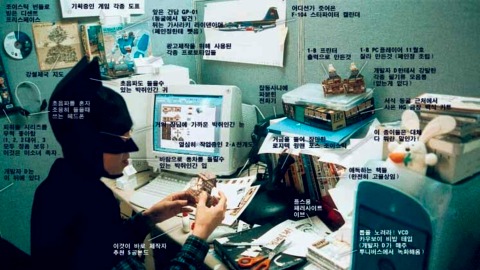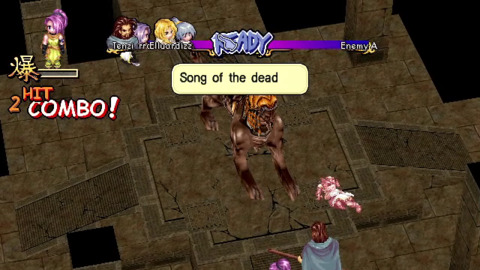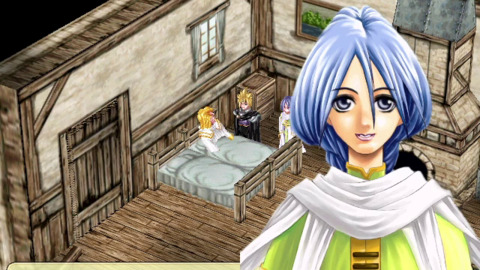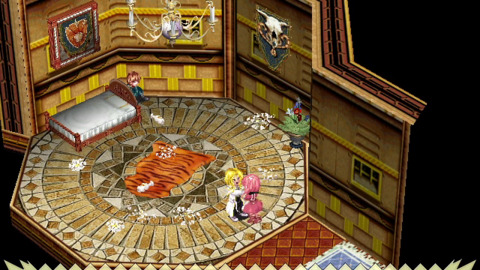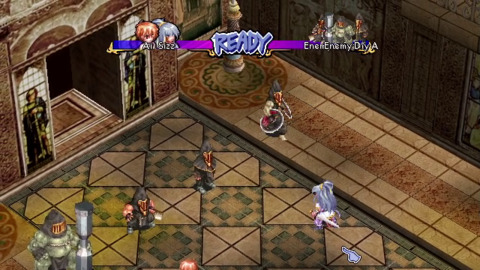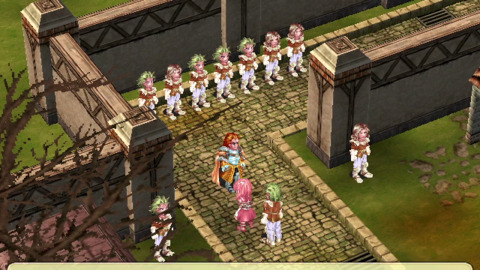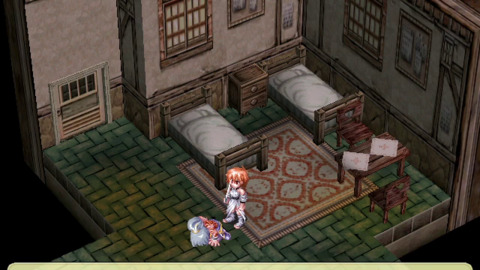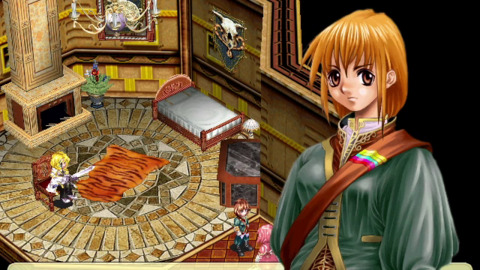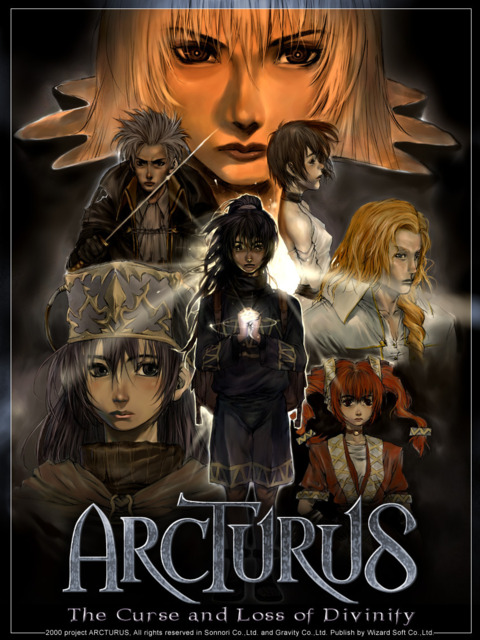Overview
Arcturus: The Curse and Loss of Divinity (악튜러스) is a Korean developed PC role-playing game created by both Gravity and Sonnori. The title was published in South Korea by Wizard Soft on December 14, 2000 and is now considered a classic that helped lay the ground work for Gravity's Ragnarok Online, a popular MMO that shared Arcturus's graphics engine. A few years later, Nihon Falcom released Arcturus in Japan on June 30, 2003.
English Release
After Arcturus was released in South Korea in 2000, there were plans to potentially release the game in the United States. An official English demo of Arcturus was created in 2001 which was uploaded to a few tech sites, such as Softpedia, and is believed to have been used to demonstrate the game to western publishers at E3 2001. However, an official localization of the full game never materialized. A fan project to translate the Japanese version of Arcturus was started in the early aughts by Mirror Moon although it was eventually put on hold in 2008 and was never finished. Eventually a user named Helly released an English patch for the Japanese DVD edition of the game in 2017.
Story
Arcturus takes place in the year 738 on a continent ruled by three powers: The Kingdom of Varensia, The Republic of the Seven Lords and The Ashirian Empire. The story is separated into two scenarios that focus on groups of characters from two of the different regions on the continent.
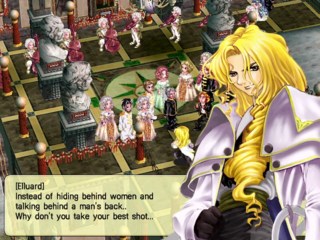
The first follows a quite boy named Sizz, who is often mistaken to be a girl, and his neighbor Maria, a bratty tomboy that is often mistaken to be a boy. They both live in the small town of Tranquilee inside the Kingdom of Varensia. Sizz's mother passed away when he was young and now his father, a once famous hero, is an alcoholic that often verbally berates his son. After Sizz's father sells the land housing his mother's grave to the Church, he finally decides to run away with Maria to the big city. However, they are soon mistaken to be a pair of thieves known as the Aarseth sisters and end up killing an officer in order to escape from the law. After running away from the authorities they are rescued by a magic user named Eispein who teaches them how to defend themselves and tells them about the mysterious Dallant stones. After Eispein leaves Sizz and Maria for unknown reasons, Maria greedily decides they should search for the Dallants in order to sell them.
The other scenario stars a playboy noble named Elluard that lives in Dome, the capital of the Republic. He is given a special mission by his uncle Albrechts, the prime minister of the Republic, who wants Elluard to search the continent for the Dallants, magical stones that grant great power to their owner. The stones were once in the possession of the Ashirian Empire but the tower housing the stones had recently collapsed and the Dallants were now missing. Albrechts claims he wants to collect the stones in order to keep their power out of the hands of the Republic's enemies. But, little does Elluard known, the Republic is actually secretly ruled by a powerful group of hooded old men and Albrechts is merely their public-facing puppet who is trying to break free of their control by obtaining the Dallants.
Eventually these two groups join forces, along with other characters, to search for the Dallants together which leads to them uncovering the greater truth behind the stones.
Gameplay
Arcturus is a turn-based role-playing game modeled after traditional Japanese RPGs. The player fights enemies to gain experience in order to become stronger and explores the world to advance the story.
Exploration
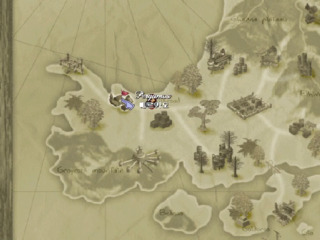
The player will journey to new locations as they continue their adventure. The world is connected through a series of roads and once the player reaches the end of a road, they will be shown the world map where they can select a nearby location to visit. If the player visits a town, they can talk to NPCs, buy items, discover side-quests and visit an inn to save their game. Books are also able to be collected, which are found throughout the world or in various libraries. Once the player obtains a book, they can read its contents inside the game's main menu. Other information is catalogued in the main menu as well such as monster data and lore about the world.
Characters also have the ability to jump while exploring the field. Normally jumping is unnecessary but sometimes it is required to overcome platforming challenges to continue the story. Additionally, characters can become over encumbered if they are carrying too many items which will cause them to walk slower and jump shorter distances.
Combat
Four characters can be in the player's active roster for combat while six units overall make up the party. Once the player runs into an enemy on the field, a battle will begin where each unit has to wait for their icon to reach the center of a timeline before making an action. But once they are allowed to act, everything happens in real-time with the only pause happening when the player selects their action in the command menu.
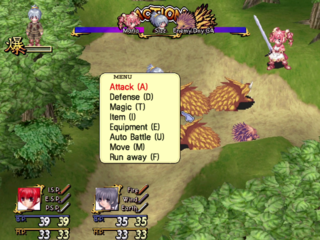
Each unit contains both HP (the character's core health) and BP or "Barrier Points." BP acts as a shield that needs to be broken down before the unit's HP can be affected, although there are certain attacks that can bypass Barrier Points. During battles, characters can attack with their weapons, use various items, cast spells, or perform skills. Every character contains three bars representing an element (fire, water ,and earth for magic and ISP, ESP, and PSP for skills). When a character performs a spell or skill, one of these elements will decrease depending on the ability's elemental alignment. The bars will refill automatically over time or an item can be used to refill the bar instantly. Over time a critical meter will also fill up as the player is attacked in battle and once the meter is full they can perform a special attack that does more damage.
New skills can be learned when a character levels up but spells have to be crafted by the player. Magic circles can be found throughout the world which the player can use to create new spells. Three elements and three catalysts need to be placed around the circle and, depending on the combination, a new spell will be created for the player to use in combat. The player can learn recipes to craft new spells inside books found in the game.
Development
The idea for Arcturus originates from Gravity’s founder Hakkyu Kim, who had been dreaming of making an RPG since he began creating games in the early 1990s [12]. Hakkyu Kim got his first shot at making an RPG when he worked as a Systems Programmer on Mantra’s 1994 remake of Ys II called Ys II Special [12]. The same year, Kim and several other fellow developers formed a development team called “Artcraft'' where Kim created his first original commercial game with Softmax, an action platformer called Lychnis in 1994 [1][12]. After Lychnis’s release, Kim split off from Artcraft and formed Team Gravity (later called Gravity Software in 1998 and finally simply Gravity in 2000) where he developed several action games such as Lars the Wanderer in 1995 and Antman 2 in 1997 with other publishers [1][12].
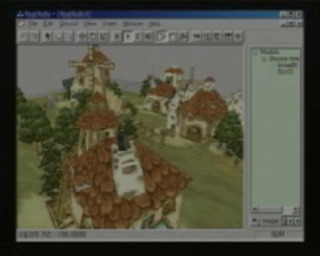
Around the same time, many people were attending game design schools in Korea due to the growth of the industry and Hakkyu Kim got a job lecturing at these schools [3]. While teaching at these academies, Kim began getting the ball rolling on his RPG project. Gravity didn't have the resources to make an RPG on their own so Kim recruited talented students to work on the project by promising to waive their tuition fees if they worked on the game [3]. Along with this influx of new talent, Kim also approached a company called Sonnori for assistance. Sonnori was a long-standing developer that had previously created one of the first successful domestically produced RPGs in the early 90s, a title called Astonishia Story. Sonnori had been wanting to work on a large-scale project so they agreed to partner with Gravity and co-develop the ambitious RPG together [3].
The game was officially announced to the public in 1998 as “Arcturus” and was planned to be released in the summer of 1999 [4]. Wizard Soft would be the game’s publisher while Gravity and Sonnori split development duties. Gravity started out being responsible for Arcturus’s story, game design, and programming while Sonnori helped with graphics and public relations. Although, over time, the two teams helped with a little bit of everything outside of the story [6]. A music composition team named SoundTEMP was also brought on to compose the game's music and one of the group's former members, Seyong Kim, currently worked at Gravity as a producer and co-writer on the project. Both Seyong Kim and members of SoundTEMP had also previously worked with Hakkyu Kim on Ys II Special, where they composed the remake’s music.
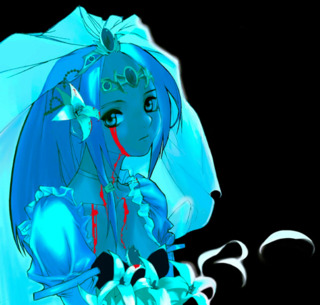
Arcturus was heavily inspired by Hakkyu Kim’s love of black and death metal music with the game’s title being a direct reference to the Norwegian band Arcturus [6]. The game's subtitle, "The Curse and Loss of Divinity," is also very similar to the song "The Loss and Curse of Reverence" by Emperor and even some of Arcturus’s early promotional art bears a striking resemblance to Cradle of Filth’s album art. Neon Genesis Evangelion served as a big influence on the biblical themes of Arcturus and the gameplay itself was inspired by Grandia, a game that Hakkyu Kim was a huge fan of [6]. Seyong Kim also injected elements from games he was a fan of such as The Legend of Heroes III: The White Witch and Dragon Quest IV [5]. When development first began, the Arcturus team was going to be only 10 people but over time that number ballooned in size to over 40 people and the title’s budget was said to be around 1 billion won [3][6]. The team’s ambitions caused Arcturus to miss the game’s initial 1999 release date, leading to the game being delayed multiple times until the limited edition of Arcturus was finally released on December 14, 2000.
The critical reception to the game was positive with many gaming publications comparing the title to Softmax’s release of The War of Genesis III Part 2, an RPG released around the same time that was often pitted against Arcturus in gaming magazines [7][8]. Arcturus would also eventually win the award for “Best Scenario” at the Korean Game Awards in 2001 [16]. However, almost immediately after Arcturus’s release, the game had to be recalled due to a plagiarism scandal [9]. Several monster designs that were created by a designer identified as “Mr. N” copied designs from Japanese artist Yasushi Nirasawa, leading to the limited edition being recalled and 15,000 copies of the game being discarded [9][13]. This also caused the release date for the regular edition of the game to be delayed to December 23rd [13]. Despite this, the game still sold 60,000 copies by January 2001 [2]. However, that number would not grow much higher with the game’s overall sales said to be around 70,000 copies [3]. It is speculated that the game was a victim of piracy which was a huge problem in the Korean game industry at the time.
Opening Video
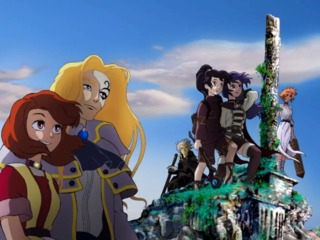
An animated opening was produced for Arcturus by a studio named Tin House Productions which was directed by Peter Chung, a Korean American animator famous for creating Æon Flux. Tin House worked on the opening for Arcturus around the same time they also produced a hugely ambitious sci-fi film called Wonderful Days (aka Sky Blue) which featured a similar mixture of 2D art and CG animation that is also seen in Arcturus’s opening. The animation director for both Arcturus’s opening and Wonderful Days was an animator named Young ki Yoon who would also go on to be the animation director and character designer for Avatar: The Last Airbender’s pilot episode, which was produced by Tin House around 2003 [15].
The opening’s song, “Open Your Eyes,” was performed by singer Jeong Yeo-jin who was famous throughout the 1980s and early 2000s for performing songs for Korean localizations of Japanese animated television shows, including performing “To My Wish” from the second ending of Digimon Adventure 02. Jeong Yeo-jin would also perform Arcturus’s ending song, “Truth in Me,” and worked again with Sonnori to perform the opening song for Astonishia Story R.
Influence
Despite certain parts of Arcturus being unfinished and the game having plenty of technical problems, Arcturus resonated with Korean players and is still fondly remembered by fans. The technology behind Arcturus would also turn out to be very influential. The next title developed by Gravity after Arcturus would be an MMORPG based off a manhwa series called "Ragnark" created by Lee Myung-jin. The game, titled Ragnarok Online, repurposed the graphics engine used to make Arcturus, which was called GFC (Game Framework Class), with Ragnark even looking very similar to Arcturus in terms of presentation [17]. Ragnarok Online would initially launch in beta form on November 1, 2001 and would eventually explode in popularity around the world with the game having millions of subscribers during its heyday in the early 2000s. Ragnarok Online’s success, along with the success of other Korean MMOs and the industry’s continued problems with piracy, encouraged other Korean developers to transition towards online development.
Outside of Korea, Nihon Falcom would release Arcturus for the Japanese PC market in 2003 as part of their overseas localization initiative started in the late 1990s. The next year in 2004, Falcom would release the first entry in their Legend of Heroes sub-series called Trails in the Sky. The title shared a lot of surface level similarities to Arcturus with many fans in Korea even speculating that Falcom had even licensed Gravity’s GFC engine to create Trails in the Sky and their other early 3D titles such as Ys VI [10]. While untrue, Nihon Falcom’s president Toshihiro Kondo did later state in a 2020 interview that staff did refer to Arcturus for ideas while designing Trails in the Sky [11].
Trivia
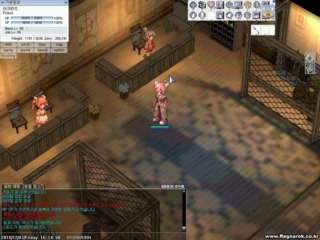
- In Ragnarok Online there are two shop vendors in Izlude that are modeled after Sizz and Maria from Arcturus. These NPCs can also be found as quest givers in Brasilis where the two are named "Pedro" and "Mariana."
- Sonnori's horror game, White Day, has several collectable video game packages hidden throughout the game. All the games are titles previously developed by Sonnori including two versions of Arcturus, the regular and limited editions of the game.
- At one point, Sonnori had a Japanese branch called Sonnori Japan and was planning to port White Day and Arcturus to the Sega Dreamcast. The plan was to release the ports in Japan but development was eventually canceled [18][20].
- Arcturus's opening song, Open Your Eyes, was included as one of the tracks in EZ2Dancer, a Dance Dance Revolution style arcade game developed by Amuseworld.
- After Arcturus was delayed past its initial 1999 release date, Sonnori held a contest where fans could create 3D papercrafts of buildings from Arcturus. Templates for the crafts were available online and within advertisements for Arcturus in gaming magazines. Fans could submit photos of their crafts to Sonnori with the deadline being February 29, 2000. The three best entries won prizes which included PC hardware such as a color printer or graphics card [21].
- In 2011, Gravity announced that an MMORPG based off Arcturus was currently in development called Acturus Online. However, the game was only in its planning stages when it was announced and has seemingly been canceled [19].
External Links
References
- A History of Korean Gaming: Gravity Profile by Sam Derboo (HG101, 2010).
- A History of Korean Gaming: Sonnori Profile by Sam Derboo (HG101, 2010).
- Arcturus: A Great Legacy Left by Korean RPGs (NAVER, 2013).
- Arcturus Announcement (PC Power Zine 10-1998).
- “Acturus” Later Story by Seyong Kim (Overdose, 2015).
- Arcturus Production Review by Hakkyu Kim (Gravity Official Website, 2001).
- Arcturus vs The War of Genesis III (PC Power Zine 09-1999).
- Arcturus vs The War of Genesis III Part 2 (PC Power Zine 02-2001).
- Article on Plagiarism Scandal (PC Power Zine 01-2001).
- [Game of Memories] Do you know this game!! - Arcturus (Gamtoon, 2010).
- Interview with Toshihiro Kondo (INVEN, 2020).
- [NDC14] Hakkyu Kim's Memoir, "Continue to yearn and learn" (This Is Game, 2014).
- News Post about Recalls and Delays for Regular Edition (Project Arcturus).
- News Post Asking Fans to Report Piracy (Project Arcturus).
- Avatar: The Last Airbender - The Art of the Animated Series (Page 30).
- Korean Game Awards (Namu Wiki).
- A Brief Look at RagExe by curiosity (rathena, 2016).
- Interview with Sonnori's Dreamcast Programmer (Making of White Day).
- Gravity Developing an Arcturus MMORPG (GameShot, 2011).
- Sonnori History 1998-2001 (Namu Wiki).
- Sonnori Official Papercraft Page

 PC
PC

